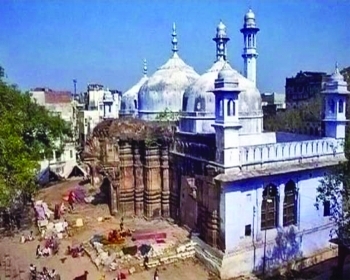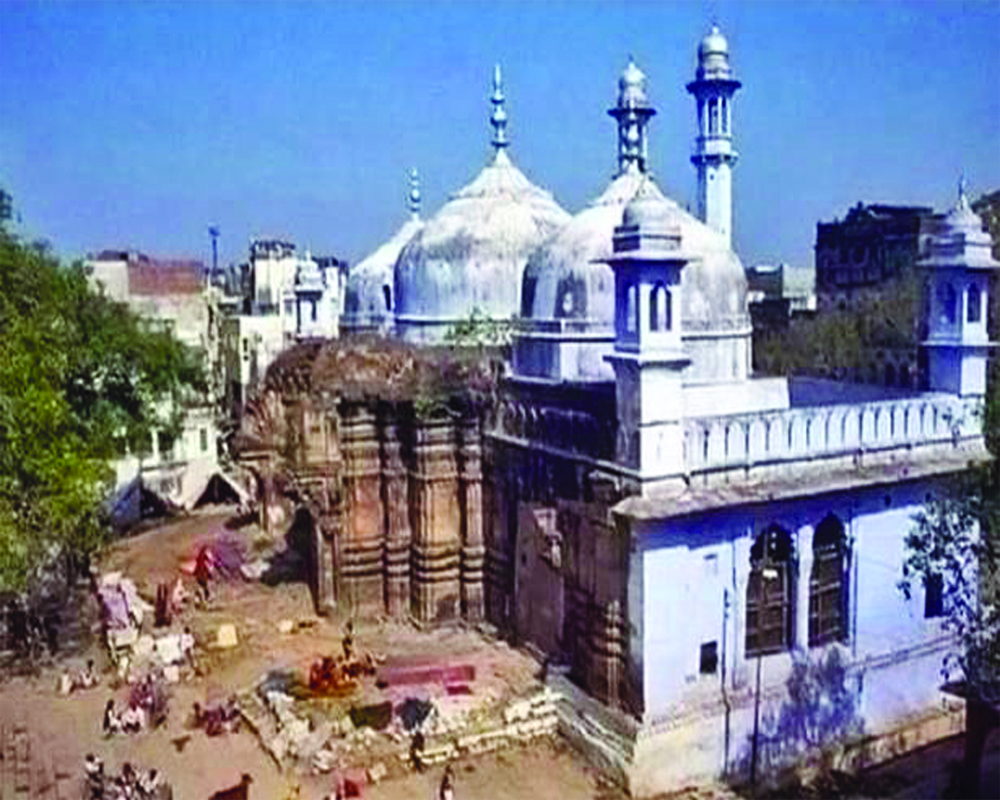
 A. J. Philip
A. J. Philip

One thing is clear. There is no secularism in the country. Those who thought that it was a part of the basic structure of the Constitution and it was, therefore, inviolable have been proved wrong. It is so fragile that even a lower-level judicial functionary can wreck it with a minimal assault.
That is what Varanasi witnessed in recent days. There is a law enacted in 1991 which froze the status of all religious structures as on the day India became independent in 1947. Of course, the Babri Masjid at Ayodhya was exempted from the Act as the matter awaited a judicial scrutiny.
The Act remained strong for nearly two decades. Courts refused to take cognisance of complaints and petitions that questioned the legitimacy of certain places of worship. All this changed when a five-member Bench of the Supreme Court headed by Chief Justice Ranjan Gogoi gave its final verdict on the Ayodhya case.
The verdict endorsed almost all the claims made by the Muslims. Yet, the spot where the Babri Masjid remained for more than 400 years was given to the Hindus. An attempt was made to mollycoddle the Muslims by offering them an alternative site to build a mosque.
Of course, the Muslims felt cheated. They remembered the promise PV Narasimha Rao as Prime Minister had given that the mosque would be rebuilt there itself. They accepted the verdict as stoically as possible.
It was the first time in the history of the Supreme Court that the verdict was not signed by the judges concerned. What’s worse, it did not say who wrote the judgement with which the four others concurred. After the verdict, the Chief Justice took the fellow judges to a five-star hotel where choice vine was served to them.
It was, perhaps, the first time that judges of the apex court celebrated a judgement by drinking wine which is against the concept of prohibition that the Directive Principles uphold. The laying of a silver brick as the foundation stone of the Ram temple at Ayodhya by Prime Minister Narendra Modi was extraordinary in many respects. It was the first time the chief executive of a secular nation laid the foundation stone of a temple!
To be fair to Modi, he paid scant regard to secularism when, on his first visit abroad as PM, he donated 2000 kgs of sandalwood to the Pashupatinath temple at Kathmandu and gifted a special edition of the Bhagwat Gita to the Japanese prime minister and took a visiting dignitary to show him the evening Aarati at Varanasi.
Modi never showed even a modicum of secular pretensions while it encouraged his followers to throw secularism to the winds. The courts also began behaving differently. The apex court did not deem it necessary to review such decisions as reducing the status of Jammu and Kashmir to Union Territories and enactment of citizenship laws that questioned the country’s secular status.
It was against this backdrop that the Supreme Court accepted a petition that challenged the 1991 law that froze the status of all disputed shrines. That the court wanted to hear the petition was itself an indication of how things were moving in the country.
The Supreme Court has judges who argued for the Hindutva organisations when the Ayodhya issue came up before the apex court. Such a judge may even become the Chief Justice. Of course, it is unfair to believe that a judge who argued for his clients while he was a lawyer would give a verdict on the basis of his old arguments.
Given the extraordinary circumstances in which the 1991 law was enacted, the Varanasi judge should have rejected the petition of five Hindu women that they wanted to worship in a particular area of the Gyanvapi mosque. It could have just dismissed the petition.
Instead, it accepted it and ordered a video-graphic survey of the whole masjid for which it appointed three persons. It did not pay any heed to the complaint that one of the persons entrusted with the survey was a lawyer, who appeared for the Hindus in a similar case.
He did enough damage, much before the commission could complete the video-graphic survey. He allegedly told the women petitioners that a two-feet Shivling was found in the ablution tank at the mosque. The dispute in Varanasi is at least 400 years old.
There is a Malayalam saying about a person looking for a rope to tie the calf when he hears that a bullock has given birth to a calf. Like that person, the judge ordered immediate closure of that portion of the mosque. He did not think it necessary to hear the Muslims.
It did not even occur to the learned judge that he should have waited for the commission to give its final report before taking a decision. The Muslims later clarified that what was claimed to be Shivling was actually a part of the fountain installed at the ablution tank.
The Muslims had to approach the Supreme Court to secure the mosque against insensitive and nonsensical decisions. Ultimately, nobody knows how things will take the ultimate course. Will the mosque remain or will it meet the fate of the Babri Masjid? The point to be noted is that secularism is as strong as the whim of a judge.
Taking his cue from the goings-on in Varanasi, a judge in Mathura has accepted a petition that seeks to remove the mosque from the Srikrishna Janmasthan temple premises at Mathura. Again, it is a wanton disregard of the 1991 law that froze the status of the mosque.
This should be seen in the context of the claim that the Taj Mahal was a Hindu temple and there are several Hindu religious objects in the closed rooms of one of the world’s wonders that attract the maximum number of tourists to India.
The judge did not bother to find out why the rooms were closed. The walls in the rooms are also made of marble and if thousands of people are allowed to enter them everyday, the carbon dioxide they exhale would damage the walls.
It is the fear of chemical reaction that can powder the marbles that forced the Archaeological Survey of India to close the 22 rooms. There are fears that if the Taj is opened for inspection, mischief-makers can claim that some Hindu objects were recovered from there.
That is what they feared in Varanasi when the video-graphic survey was ordered.
Such fears are not unwarranted. They all remember how some mischief-makers planted an idol in the Babri Masjid and claimed that it appeared on its own. It was a patently false claim.
The planting of the idol had the blessing of the then district magistrate, a brilliant but mischievous KK Nayar, who later quit the IAS and, in due course, became a Parliament member on the Hindu Mahasabha ticket. He will always remain an icon of the Hindutva forces.
Some cadres of the Sangh Parivar have already found “tell-tale” evidence of Qutub Minar having been built by a Hindu King who wanted to see the Sun and the moon at close quarters. They say that the area is strewn with Hindu objects like idols and pillars patterned after lotus flowers.
They have already renamed Qutub Minar as Vishnu Pillar. Not many people know that the Taj Mahal is taller than the Qutub by about one metre. A temple at Gurugram is being re-modified to make it taller than the Taj.
Around the same time a group of people demonstrated against retaining the name of Emperor Shahjahan for a road in New Delhi. Those who thought that they had objection only to the name of Emperor Aurangzeb are thoroughly mistaken. The leader of the Delhi unit of the BJP wants all Muslim names of roads and public places removed.
He is not wide off the mark. In Uttar Pradesh, Chief Minister Yogi Adityanath has already changed the names of many such places. Before long, there would be no Muslim names. That raises the question, how was all this accomplished without changing the secular character of the Constitution.
Dr Ambedkar had once predicted that the Constitution will remain sacred only as long as those wielding authority respect it. When Modi became Prime Minister he bowed before a statue of the Constitution.
Actually, there is no need to worship the Constitution. Like there is no need to worship women and young girls. What the women need is respect as equal citizens of the country who should not be discriminated against on grounds of gender. Similarly, there is no need to worship the Constitution.
What is needed is to uphold the provisions of the Constitution at all times. The Prime Minister is now busy building a very large Parliament House with large rooms for ministers and MPs. Democracy flourishes not when the Parliament House is made larger.
The military junta in Myanmar built one of the largest capitals in the world, far from Rangoon. The country has a state-of-the-art parliament building but has this made the country a better nation? It is the same country which killed thousands of Rohingyas and threw them out of the country claiming that they are Bangladeshis. Support to the military junta did not save Aung San Suu Kyi from a corruption case.
There was a time when Prime Ministers like Jawaharlal Nehru attended Parliament sessions and took copious notes from the speeches made by leaders like Madhu Limaye and AB Vajpayee. That is how democracy thrives.
Modi seldom attends Parliament. As Chief Minister also, he had a poor record in this regard. However, he wants to be remembered as the one who built the largest Parliament, perhaps, in the world. Alas, it won’t make him a greater democrat!
The various Articles of the Constitution are all great. It is the laws that are enacted which are against the spirit of the Constitution. When Keshavananda Bharati case came up before the apex court, it decreed that the basic structure of the Constitution can never be altered. A judge was asked to define the basic structure at that time.
He replied that when the basic structure of the Constitution was tampered with, the court would respond. It is now obvious that the basic structure doctrine is safe only when those who believe in concepts like equality, liberty and fraternity are in power.
The nation saw how under Chief Justice Ranjan Gogoi the court thought fit to look the other way when serious questions that challenge Federalism, corruption in high places and religious freedom rattled the nation. The apex court’s word is considered the ultimate. It is not because it has the wisest judges. It is because there is no other court above it.
So when BJP leader-turned-Congress leader Navjot Singh Sidhu got a verdict from the Supreme Court in a road rage case that amounted to man slaughter, he thought the case was over. He was asked to pay a fine of Rs 1000. Now when the case came up again, he was punished by the same court with imprisonment of one year. How can the same person be punished twice in the same case?
This shows the non-application of mind by those in judicial authority. A person convicted of terrorism was released recently by the same Supreme Court which upheld the conviction a few years ago. Worse, one of the former judges who found him guilty of terrorism has invited him to his house at Kottayam.
Justice is supposed to be blind. Blind because in the dispensation of justice it does not matter whether the accused is Hindu or Muslim, man or woman, rich or poor, upper caste or lower caste and educated or illiterate. Alas, Lady Justice uses her eyes to determine which provision of the law should be applied against which person!
ajphilip@gmail.com